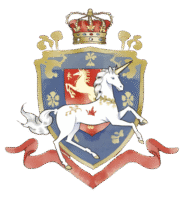When I set out to build my very first e-commerce website, I thought it would be simple. I imagined I just plug in some pictures. I would set prices and describe each product charmingly. I had been describing products since the dawn of my artistic career. I imagined it would be like opening a boutique where everything just flows into place. Spoiler alert: it was not. Instead, it was like opening Pandora’s Box. Every Greek myth monster from taxonomy to tags came out to say “Hello!” all at once. Here’s what I learned—and what you can avoid doing when building an e-commerce site for the first time.
Chapter 1: The Taxonomy Tango
Taxonomy: no, it’s not just a fancy word zoologists use for classifying animals. In the world of e-commerce, taxonomy is how your website classifies everything. It’s the structure, the scaffolding, the map. You organize your products clearly. This ensures visitors (and search engines) don’t feel like they’ve entered the world’s messiest closet.
Definition: Taxonomy in e-commerce is a structured system for organizing and categorizing products. Think of it as a family tree for your items. At the top are broad categories. Underneath are more specific subcategories.
My Mistake: I ignored taxonomy in the beginning, diving right into uploading my thousand or so products. I thought, “Who has time for taxonomies when you have art to share?” Fast-track a few weeks, and I was elbow-deep in chaos. Products were lost, search functions were useless, and I was the digital equivalent of a hoarder. So there I was, going back to re-categorize my products one by one, adding each into a logical hierarchy. Lesson learned? Always start with taxonomy.
How to Use It: Map out your product categories before you do anything. Think about it like organizing a library: start with broader categories (like “Artwork” or “Stationery”) and narrow them down (e.g., “Fantasy Art” or “Fine Art Posters”). It’s tedious up front, but I promise, Future You will thank you.

Chapter 2: Tag, You’re It
Enter tags. Tags are the magical little breadcrumbs that help people find your products within each category. They’re the keywords that add specificity to your taxonomy, like adding “vintage,” “abstract,” or “minimalist” to your artwork collection.
Definition: Tags are descriptive keywords that make products easier to find. Unlike categories, which are broad, tags are flexible and can overlap across multiple categories.
My Mistake: I treated tags like confetti—sprinkling them around randomly in the hopes they’d eventually help. I tagged some products as “cool,” others as “awesome,” and a few as “personal favorite.” Let’s just say that was not helpful to anyone trying to search. To remedy my mistake, I went back and tagged each product. I ensured they were consistent. They needed to be actually useful for guiding potential buyers.
How to Use Them Correctly: Tags are for themes and keywords. Think about the words people use to find your product. If you’re selling a surrealist art print, tags like “surreal,” “fantasy,” or “abstract” are helpful. Avoid tags that are subjective (trust me, “cool” does not help anyone). Pick 2-5 clear, relevant tags that someone would reasonably type in a search.

Chapter 3: Optimizing the Visual Feast
I also learned the importance of image optimization. This realization came after I loaded my site with so many uncompressed images. It moved slower than dial-up in 1995. You’d think I was preparing for a digital gallery opening instead of an e-commerce site. Image optimization is not just about shrinking file sizes. It’s about creating an experience where pages load fast. Products need to look sharp. Search engines should actually find your content.
Definition: Image optimization involves adjusting file size, format, and quality so images load quickly and keep high resolution. It includes adding keywords to file names and “alt text” to boost SEO.
My Mistake: I originally uploaded enormous, high-res images without a thought. My site loaded very slowly. I also realized search engines “see” my images because I’d ignored alt text. So, back to the drawing board I went, resizing and renaming every image. It was tedious, but it made my site zippier and my art findable.
How to Do It Right: Before uploading, resize images to an appropriate resolution (for websites, 72 DPI is typically enough). Include relevant keywords in the file name. Add descriptive alt text like, “Fantasy Art Print of Dream Castle in Clouds.” This helps with SEO, boosts accessibility, and generally makes you feel like a web design pro.

Final Thoughts: The Hard-Earned Truths
So, what’s the lesson in all this? Don’t be like me. Don’t dive in without a map, blissfully unaware of the importance of taxonomies, tags, and optimization. Take some time before launching to learn the basics of categorizing, tagging, and image optimizing. It feels like a buzzkill, but it will save you from hours—no, days—of retracing your steps.
Building an e-commerce site can feel overwhelming, but every step is a new skill gained. With taxonomy, tags, and image optimization in place, I’m closer to offering a user-friendly, organized shopping experience. And next time? I’ll plan ahead.




